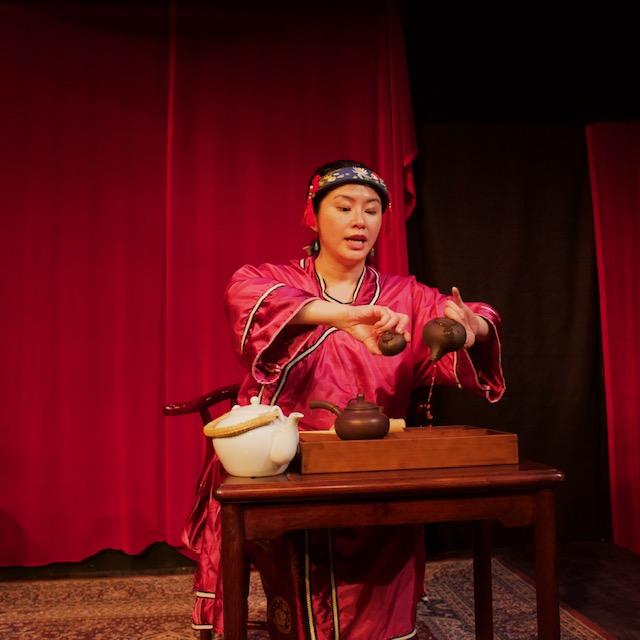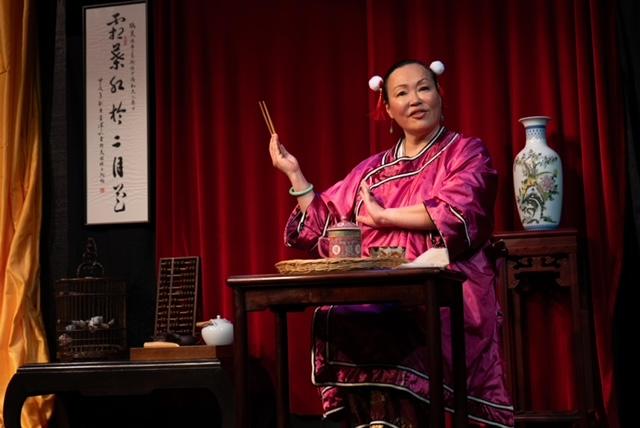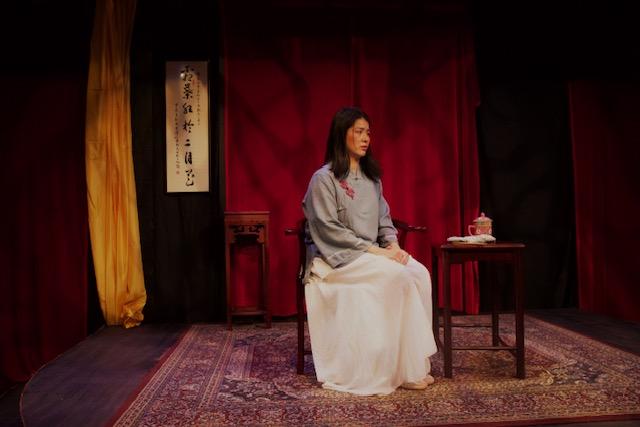
“The Chinese Lady” by Lloyd Suh is a two-person, one-act play that might just be the best theater you will see this year. It is no surprise that the theater which brought this play to the Bay Area is the Pear. It takes on tremendous challenges like this and provides truly magical experiences for its audiences. There was a standing ovation after the performance I attended, and I expect there will be one after every performance of this play. The two actors portrayed their roles as if they had lived the lives of these characters, and the audience appreciated their ability to make you believe that.

The play is loosely based on the true story of Afong Moy, a young girl from Guangzhou province who was reportedly the first Chinese female in America. She was 14 when she was brought to the states by the Carnes brothers, owners of a business that imported Chinese goods. The brothers put Afong on display to help sell their products and to bring paying customers to her shows during which she demonstrated Chinese ways of eating, drinking tea, dressing, and walking with her tiny bound feet. This mysterious 14-year-old attracted large audiences and toured the country, even meeting President Andrew Jackson. Much of Afong’s true story is undocumented and many facts are questionable.

But this play is not a re-creation of her life, or a reenactment of her true story. It is the perceived performance of Afong Moy as she looks back at her many years on display in America and how she felt and behaved throughout the years. As the 90 minute play unfolds, Afong and her interpreter, Atung, talk to us about their experiences, what is going on in America during each time frame, and how they are treated. The setting is the much contrived “Chinese” room in which Afong was displayed for the curious on-lookers for so many years. The play begins as if it is 1834; Afong is looking back at her 14-year-old self. She has just arrived in America. She is full of energy, hope and confidence. She seems excited about her role in America (it was to be for only 2 years), and she dominates the room as well as Atung, her somewhat irrelevant (in her opinion) interpreter.

Each change of scene results in a different year and a different age for Afong and the country. We listen as her thoughts and her dialogue with Atung progress through the years. We get a glimpse of what is happening in America that influences the Chinese-American experience. We see the dynamic between Afong and Atung evolve. Afong gets bolder and less naïve. She dreams of bringing about acceptance and friendship between the people of China and the people of America. You can feel her strength and also her despair. She expects a better life. Yet she sees what is happening in America, and her inability to do much about it. She sees the repetitiveness of her performances and how she is treated. Through the years and even into the future she foresees, her emotions peak and she feels guilt at not doing more for the Chinese people she feels obligated to represent. JoAnn Wu, the actor who portrayed Afong, became Afong Moy for us. She is the consummate actor who makes you believe she is the person she is portraying. Her emotions were real. You could sense her belief in everything Afong Moy was trying to accomplish in her life.

Joseph Avarado, as Atung, Afong’s interpreter, without saying much, told us A LOT about the experience of Chinese men in America. There is a scene in which he interprets the dialogue between Afong and President Andrew Jackson. He puts his own spin on both parties’ words and creates a dialogue of his choosing. His word changes and tone of voice tell a story of their own. He also shines in a scene in which he shares his dreams with the audience and why his dreams must remain unfulfilled. The dynamic between JoAnn Wu as Afong and Joseph Alvarado as Atung added another layer of excellence to this fabulous play.
When you see a play at the Pear Theatre, the experience is unlike what you’d have if you saw the same play at a different venue. The Pear always adds its own unique touches that make the experience one-of-a-kind. For “The Chinese Lady” the Pear offers a room of exhibits about the Chinese experience in America. Largely provided by The Chinese Historical and Cultural Project, these exhibits are an interesting look into the history of Chinese Americans. You might want to get to the theatre well ahead of time and stay after to take advantage of these informative and entertaining exhibits. On Sundays through May 5th, during the run of this production, there are special events after each matinee. See their website, thepear.org for details about these events and information about the play and tickets.
The dates for “the Chinese Lady” are April 19-May 12. In repertory with this play, “Love Letters,” also a two-person play, featuring real-life Bay Area couples, runs on alternate evenings and afternoons. I haven’t seen it yet, but everything at the Pear is great entertainment, and I hope to see that play as well.
I have to mention here that the Pear Theatre hosts more than just plays. Still to come in their 22nd season are Pear Pressure Cabaret nights, the Pear Seeds Theatre Camp, and a World Premier production of “Chaplin & Keaton on the Set Of Limelight.” On Monday April 23rd they will announce their lineup for the 23rd season. I always suggest getting tickets early for their performances.




Be the first to comment